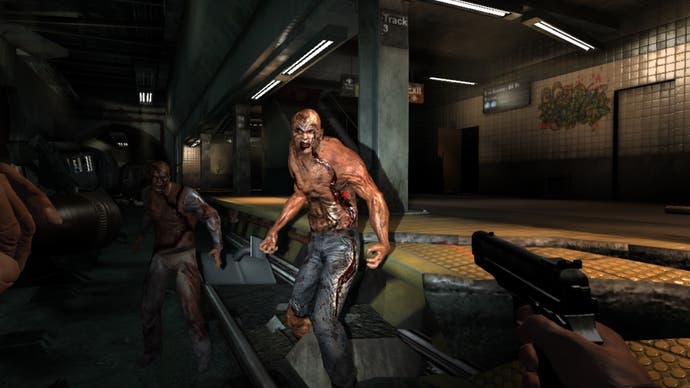Alone in the Dark: Inferno
Burning crusade.
Developers rarely get a second chance with console games, unless you count sequels (and that would take all day), but when a port is lagging several months behind they sometimes get another half-chance. No one can argue Alone in the Dark needed an update, despite its successes, and Eden Studios has done a valiant job. The problem is that the game didn't need tweaking so much as Eden back at the drawing board.
The Xbox 360 version certainly had an intense atmosphere and memorable set-pieces as you took control of Edward Carnby for a hellish night of demonic discovery in Central Park, burning monsters and searching for the truth about your past, and it encouraged inventive problem-solving in a way that marked it out from the survival-horror herd. But far too much of the time you found yourself fighting the fiddly controls, a largely terrible camera system and probably the most borked driving mechanics in any game of this generation. Throw in some dreadful signposting and an inexplicably drawn-out root-burning section towards the end and it was a game to inspire delight and fury in almost equal measure. No wonder, then, that most people couldn't be arsed. To give Eden its dues, the team took the worldwide mauling in the right spirit and set about fixing as many of the problems as possible for the game's belated PS3 release.
The first and most crucial change is the ejection of the misguided dynamic camera system. Instead of lurching around searching for the most atmospheric view, the camera now lives behind you by default so you can see what's going on at all times. With full manual camera control also assigned to the right stick, the difference is vast, and immediately the game feels more polished and enjoyable. Everything from environmental interaction to combat is more assured and less likely to work against the player, while little tweaks such as running by default, rather than having to hold a button, are just common sense. On the rare occasions you need to walk, a gentle push on the left analogue stick does the job. It's the simple, standard and intuitive third-person system with which we're all comfortable.

Combat used to be painful too. Enemies would overwhelm you, often appearing out of sight to knock your weapon away before meting out punishment that you were ill-equipped to handle. Even when you did manage to batter one of them to the floor, the clunky process of dragging them into fire to kill them off for good was neither intuitive nor, in some cases, even possible because of the restrictive way the dragging mechanic worked. This time, however, not only do enemies take fewer hits to go down, but it's also easier to manoeuvre enemies wherever you like, so they stop waking up by the time you've got them facing the right way. Even the innovative-but-clunky inventory system is improved. You still have to reach into your jacket pockets and rifle through the contents, but you're no longer expected to continually change the torch batteries. Cycling through with the d-pad is also a smart move, and far more accurate than fumbling around with the analogue stick.








